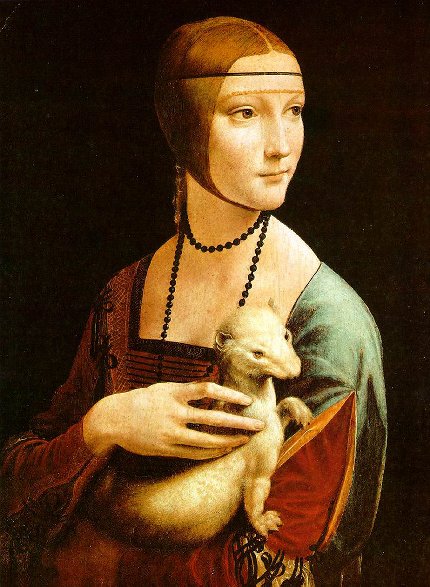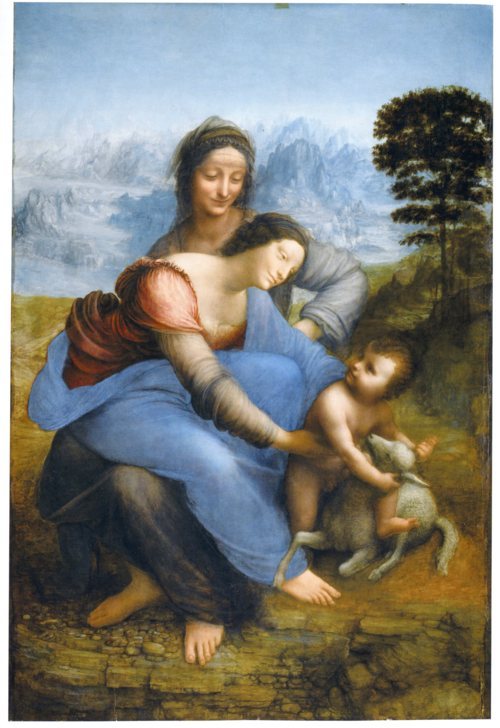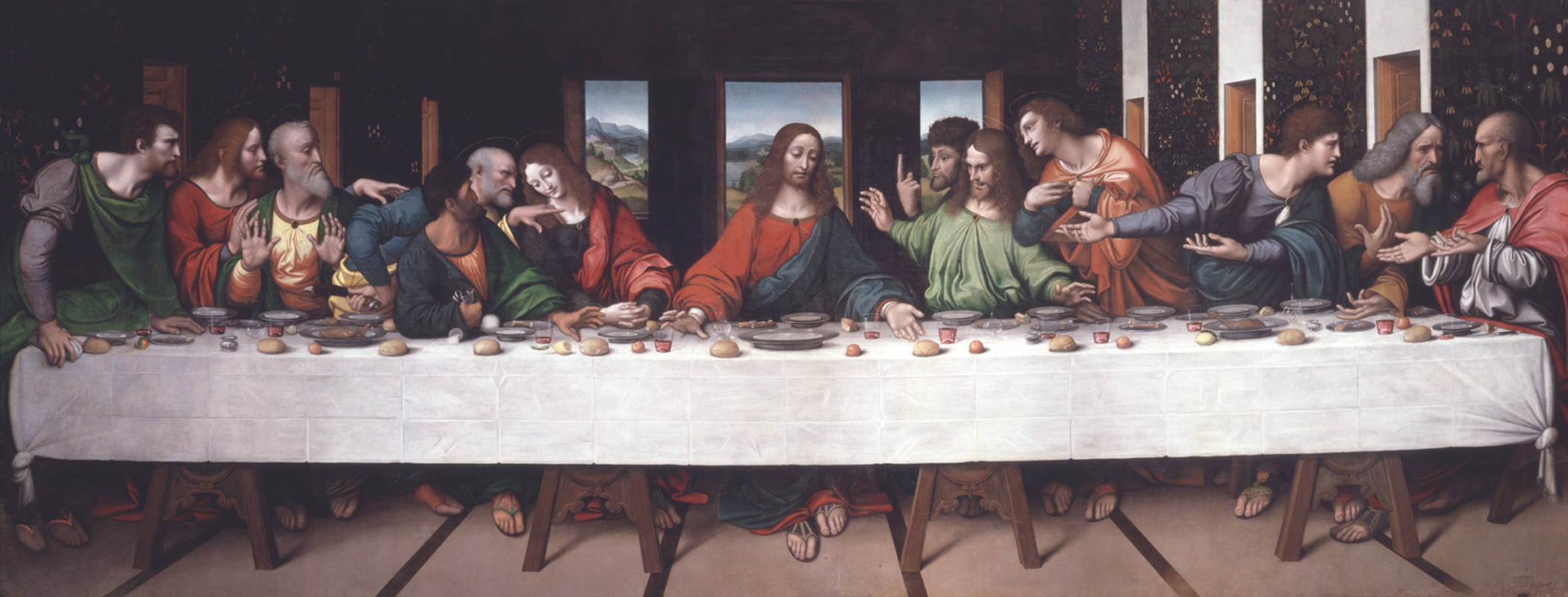Sunday, February 10, 2013
Leonardo Da Vinci: Painter at the Court of Milan
From 9 November 2011 – 5 February 2012 the National Gallery, London presented a landmark exhibition, Leonardo da Vinci: Painter at the Court of Milan examining Leonardo’s extraordinary observation, imagination and technique.
The exhibition concentrated on his career as a court painter in Milan, working for the city’s ruler Ludovico Maria Sforza, il Moro (‘the Moor’) in the 1480s and 1490s. Bringing together the largest ever number of Leonardo’s rare surviving paintings, it included international loans never before seen in the UK. Private and institutional lenders have proved exceptionally generous, taking full and proper account of the serious scholarly ambition of this project.
While numerous exhibitions have looked at Leonardo da Vinci as an inventor, scientist or draughtsman, this was the first exhibition to be dedicated to his aims and ambitions as a painter. ‘Leonardo da Vinci: Painter at the Court of Milan’ displayed more than 60 paintings and drawings by the great artist, as well as pictures by some of his closest collaborators. Nearly every surviving picture that he painted in Milan during this period was exhibited.
These include
the 'Portrait of a Musician' (Biblioteca Ambrosiana, Milan),
the 'Saint Jerome' (Vatican, Rome), '
The Lady with an Ermine' (Czartoryski Foundation, Cracow),
the 'Belle Ferronnière' (Musée du Louvre, Paris)
and the National Gallery’s own recently restored Virgin of the Rocks.
As part of the exhibition, the National Gallery and the Louvre announced a unique collaboration which brought both versions of the 'The Virgin and Child with Saint Anne' together for the very first time. The two pictures were shown at The National Gallery’s exhibition, Leonardo da Vinci: Painter of the Court of Milan from 9 November 2011 – 5 February 2012 in London.
Just a few months later, but this time at the Louvre from 29 March – 25 June 2012 in the exhibition, 'Leonardo da Vinci’s St Anne', Leonardo’s newly cleaned and restored
'The Virgin and Child with Saint Anne' were joined with the National Gallery’s version,
The Burlington House Cartoon - Virgin and Child with Saint Anne and John the Baptist,
These pictures show how Leonardo, benefiting from his salaried position, used his artistic freedom to find new ways of perceiving and recording the natural world - focusing especially on the human anatomy, soul and emotions. These investigations could take on their own life, but they also fed into the meanings and evolution of his paintings.
Leonardo was born in or near Vinci in Tuscany and was trained in Florence by the sculptor-painter Andrea del Verrocchio. In about 1482-3 he moved to Milan, slightly later finding work as a court artist for the ruling Sforza family. He remained there until just after the city was invaded by the French in 1499. He may have visited Venice before returning to Florence in 1500. A second period in Milan lasted from 1506 until 1513, and it was then that he finished the London 'Virgin of the Rocks'; this was followed by three years based in Rome. In 1517, at the invitation of the French king, Leonardo moved to the Château de Cloux, near Amboise in France, where he died in 1519.
There are two works by Leonardo da Vinci in the National Gallery’s permanent collection: The Virgin of the Rocks (about 1491–1508), and The Virgin and Child with Saint Anne and Saint John the Baptist (also known as 'The Burlington House Cartoon') of about 1499–1500. 'The Virgin of the Rocks' was bought in 1880 by the National Gallery.
Leonardo da Vinci’s time in Milan was the making of him – both as an artist and as a public figure. It was in Milan that Leonardo executed his two profoundly different versions of the mysterious 'Virgin of the Rocks', as well as the almost uncannily perfect wall-painting of 'The Last Supper'.
This work was represented in the exhibition by
a near contemporary, full-scale copy by his pupil Giampietrino (1500–1550), lent by the Royal Academy. Leonardo also painted a trio of portraits that were to revolutionalise the genre – pictures that will be seen together in London for the first time. Leonardo, a musician himself, worked closely with other musicians, designing musical instruments and devising settings for courtly entertainments. It was during this time that he painted his only portrait of a man – 'The Portrait of a Musician'. The highly idealised 'Belle Ferronnière' may be a portrait of Ludovico il Moro’s duchess or of one of his mistresses. But the most justly celebrated of the three is the exquisite portrait of Il Moro’s mistress Cecilia Gallerani, 'The Lady with an Ermine', arguably his greatest masterpiece of these years.
The portrait of Cecilia Gallerani, painted in 1488–90 has been acclaimed as the first truly modern portrait. The sitter’s twisting pose and nuanced expression convey her inner life, mind, soul – and what we would now call psychology. Cecilia was renowned for her beauty, wit, scholarship, and poetry. Still in her teens in 1489 when she became Ludovico’s mistress, the painting of her portrait allowed Leonardo to demonstrate how a painter could capture a beauty that time would destroy. He portrayed Cecilia holding a white ermine, an enigmatic feature that has multiple meanings. It may be a visual pun on her surname since the Greek for ermine or weasel is 'galay'. It could also stand for her lover, Ludovico Sforza, since he had been awarded the order of the ermine by the King of Naples and was known as ‘l’Ermellino’ as a result. The ermine was also written about by Leonardo as a traditional symbol of purity and honour.
More than 50 drawings relating to the paintings were exhibited for the first time. Highlights included 33 sketches and studies from the Royal Collection. The many Leonardo drawings owned by Her Majesty the Queen were probably purchased during the reign of Charles II but were rediscovered by chance only in 1778, when writer, Charles Rogers wrote: ‘Mr Dalton fortunately discovered the album of drawings at the bottom of a chest at the beginning of the reign of his present Majesty [George III]’. UK collections are rich in drawings by Leonardo – and other graphic masterpieces will be lent by the British Museum, the Courtauld Gallery, the Fitzwillam and Ashmolean Museums and the National Galleries of Scotland. From further afield came drawings from Paris, Florence, Venice and New York. The exhibition included all the surviving drawings which are connected to the 'Last Supper' and the 'Madonna Litta', which were lent by the Hermitage, St Petersburg.







